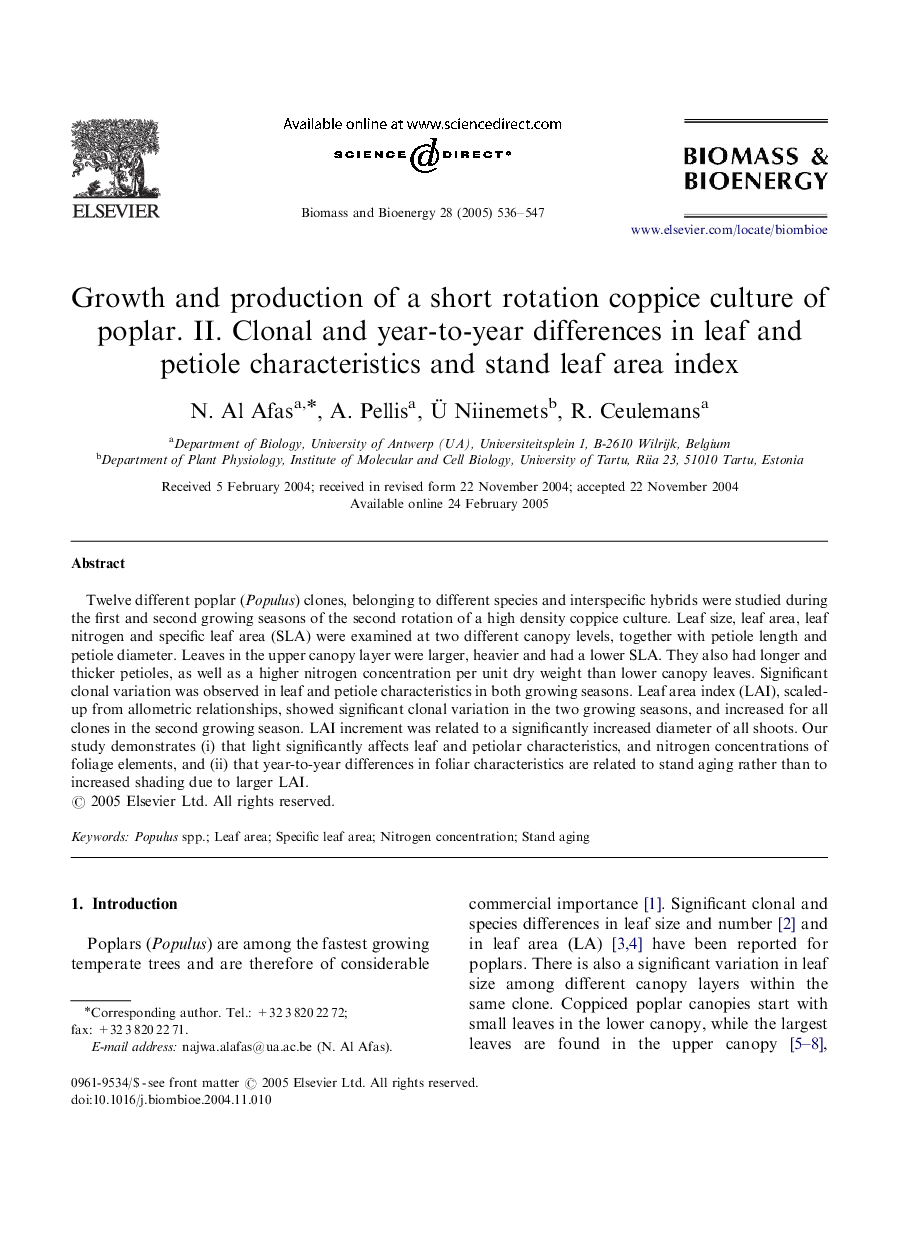| Article ID | Journal | Published Year | Pages | File Type |
|---|---|---|---|---|
| 10393976 | Biomass and Bioenergy | 2005 | 12 Pages |
Abstract
Twelve different poplar (Populus) clones, belonging to different species and interspecific hybrids were studied during the first and second growing seasons of the second rotation of a high density coppice culture. Leaf size, leaf area, leaf nitrogen and specific leaf area (SLA) were examined at two different canopy levels, together with petiole length and petiole diameter. Leaves in the upper canopy layer were larger, heavier and had a lower SLA. They also had longer and thicker petioles, as well as a higher nitrogen concentration per unit dry weight than lower canopy leaves. Significant clonal variation was observed in leaf and petiole characteristics in both growing seasons. Leaf area index (LAI), scaled-up from allometric relationships, showed significant clonal variation in the two growing seasons, and increased for all clones in the second growing season. LAI increment was related to a significantly increased diameter of all shoots. Our study demonstrates (i) that light significantly affects leaf and petiolar characteristics, and nitrogen concentrations of foliage elements, and (ii) that year-to-year differences in foliar characteristics are related to stand aging rather than to increased shading due to larger LAI.
Related Topics
Physical Sciences and Engineering
Chemical Engineering
Process Chemistry and Technology
Authors
N. Al Afas, A. Pellis, Ã Niinemets, R. Ceulemans,
